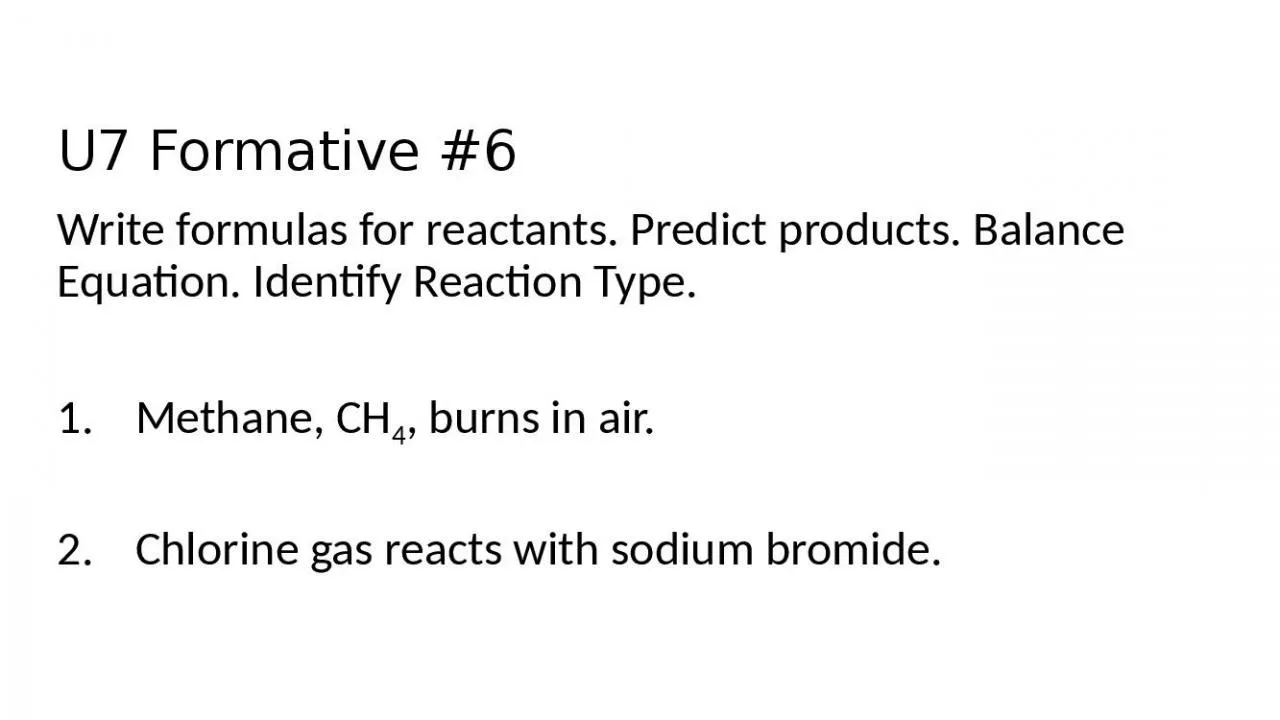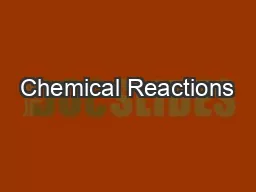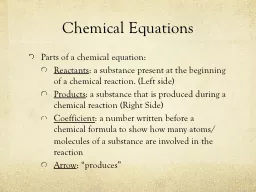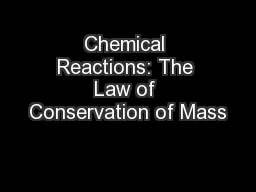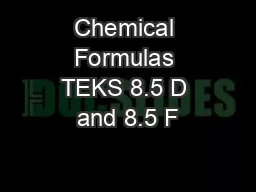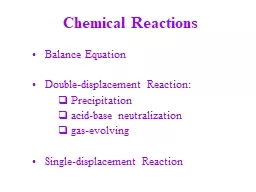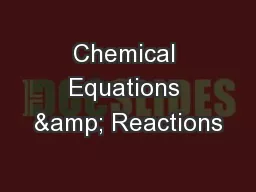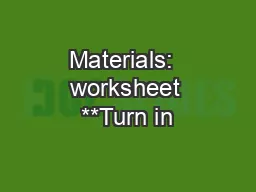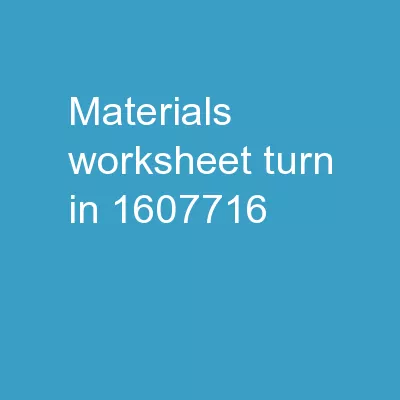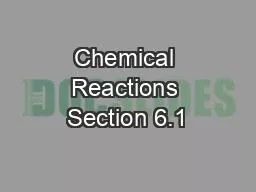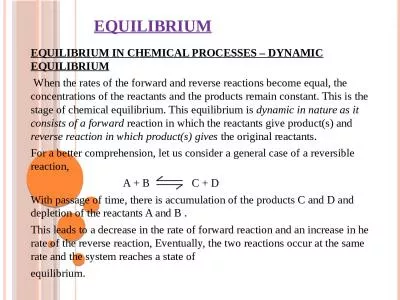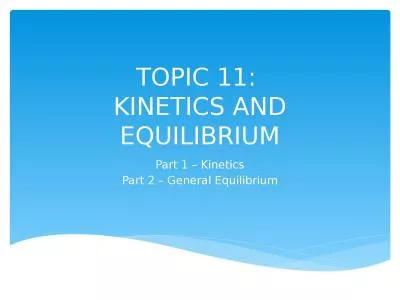PPT-U7 Formative #6 Write formulas for reactants. Predict products. Balance Equation. Identify
Author : jovita | Published Date : 2024-07-05
Methane CH 4 burns in air Chlorine gas reacts with sodium bromide Energy and Reactions Context clues in given scenarios or observations in experimentation convey
Presentation Embed Code
Download Presentation
Download Presentation The PPT/PDF document "U7 Formative #6 Write formulas for react..." is the property of its rightful owner. Permission is granted to download and print the materials on this website for personal, non-commercial use only, and to display it on your personal computer provided you do not modify the materials and that you retain all copyright notices contained in the materials. By downloading content from our website, you accept the terms of this agreement.
U7 Formative #6 Write formulas for reactants. Predict products. Balance Equation. Identify: Transcript
Download Rules Of Document
"U7 Formative #6 Write formulas for reactants. Predict products. Balance Equation. Identify"The content belongs to its owner. You may download and print it for personal use, without modification, and keep all copyright notices. By downloading, you agree to these terms.
Related Documents

